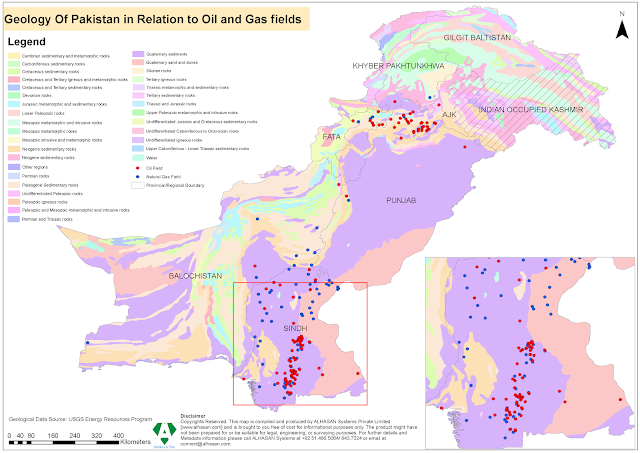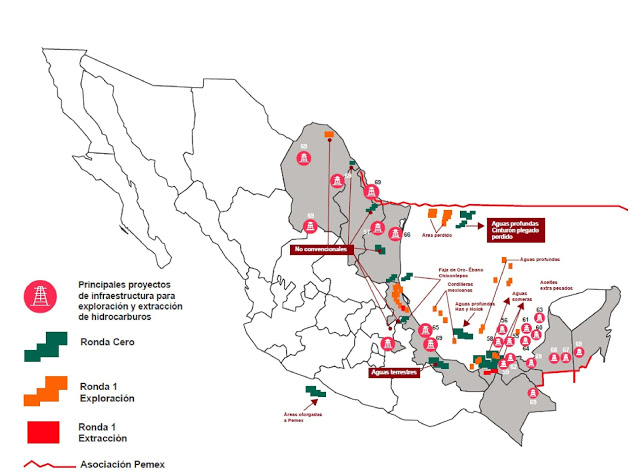Parkplaceenergy: Turkey Producing Properties
“Our new subsidiaries, formerly the Tiway Companies, own interests in three producing areas, two of which have significant potential:
- South Akcakoca Sub-Basin: offshore gas play (36.75% WI); substantial untapped contingent and discovered resources
- Cendere: onshore oil play (19.6% WI); long life – estimated 10+ years remaining
- Bakuk: onshore gas play (50% WI); operated by one of our new subsidiaries
Current production from the three areas has averaged 434 BOE per day for the first six months of 2016.
SASB UNDEVELOPED DISCOVERIES AND PROSPECTS
Five wells were drilled, tested and then temporarily abandoned.Each of these wells tested significant daily quantities of gas. We believe these 5 wells have up to 60 Bcf in contingent resources. We will look for ways to connect and produce these resources:
- Alapli
- Bayhanli
- Guluc
- South Akcakoca
- West Eskikale
Based on the same technology that discovered the existing wells, we have identified an additional 8 undrilled prospects defined on 3D seismic data.”

The greatest debate surrounding the Leviathan and Aphrodite discoveries is how to transport the oil and gas to market. There seem to be four possibilities on the table: a
The Mediterranean Sea plays offer new opportunities
07/10/2013
Pipelines versus LNG
The greatest debate surrounding the Leviathan and Aphrodite discoveries is how to transport the oil and gas to the market. There seem to be four possibilities on the table: a pipeline to Turkey; a pipeline to Greece; a liquefaction plant in Cyprus; and a floating liquefied natural gas (FLNG) vessel.“

“The first option is politically complicated. Building a pipeline to Turkey that would feed into existing pipeline infrastructure to Europe could be the most cost-efficient choice. … “
“The second option would entail constructing a pipeline from Cyprus to Crete and from Crete to Greece, connecting then to existing pipelines throughout Europe. However, this option appears to not be commercially viable. At least that seemed to be the conclusion at the 2nd Cyprus Energy Forum in December 2012. Solon Kassinis, vice president of the CNHC, hinted that this idea has been all but abandoned. The main concerns appear to be the high construction cost, long construction time, falling electricity demand and prices in Europe, and the necessary long-term supply contracts that would be linked to the price of oil.“
“The third option consists of constructing a liquefaction plant in Cyprus, where the natural gas from both the Leviathan and Aphrodite fields could be liquefied and shipped. The major benefit of this option is that the LNG can then be shipped to a variety of markets (Europe as well as Asia), garnering higher prices on the spot market. The largest drawback, however, is the price tag – LNG terminals typically cost about $10 billion (as compared to $1 billion for a Cyprus-Turkey pipeline). Kassinis explained at the 2nd Cyprus Energy Forum that Cyprus was contemplating an LNG facility with up to three trains for a total capacity of up to 15 MM tons/yr. An LNG train is a liquefaction and purification facility, which typically has the capacity for 5 MM tons of natural gas a year.
“For those wondering about constructing an LNG plant in Israel instead of Cyprus, this option appears impractical because of limited space, environmental concerns, and security problems in Israel. “The fourth option is mooring a floating LNG vessel at Leviathan and Aphrodite. On one hand, this option has great advantages – exportable LNG and lower cost relative to a pipeline to Greece – but on the other hand, the technology is new and untested. There are also fears that the vessel would be vulnerable to terrorism.“
“Condor Petroleum, through its wholly-owned subsidiary Marsa Turkey BV (MTBV), has a 100% working interest in two adjoining production licenses located on the Gallipoli (Gelibolu) peninsula in NW Turkey, lying within the SW extension of the prolific gas-producing Thrace Basin.
The company has since proven the area it to be an emerging high-value, low-cost play with significant development and exploration upside. Key to the commercial metrics of the project is the 36” Inter Turkey-Greece-Italy pipeline which transects the Ortakoy license and lies only 16 km from the Poyraz Ridge gas field. MTBV has signed a connection tie-in agreement with Botas, the country’s state-owned crude oil and natural gas pipeline and trading company.
The company has recently signed a favorable gas sales agreement with a top tier mid-stream company. The Poyraz Ridge facilities have been designed to handle up to 15MMscf/d and front-end engineering and procurement activities are ongoing. First gas is planned for Q3 2017.“
 10. PAKISTAN
10. PAKISTAN
Why are there earthquakes in the northern part of Pakistan?
Just look where they drill for gas and oil!
Geology Of Pakistan in Relation to Oil and Gas fields

Development of natural gas as a vehicular fuel in Pakistan: Issues and prospects
- 1st Muhammad Imran Khan
- 2nd Tabassam Yasmeen
- Article · March 2014

U.S. Concerns Over Iran-Pakistan-India Gas Pipeline
By Subhash Vohra, VOA, Washington, 06/18/08

“A land-based pipeline from Iran to India would be four times cheaper than any other option, even after taking into account transit fee payments to Pakistan“.
11. Mexico and USA!
Mexican Frontier Hydrocarbon Basins*
Colin Stabler1 , Michele Bishop2 , and Edwin Moritz2 Search and Discovery Article #10743 (2015)** Initially Posted June 29, 2015; final posting August 10, 2015

“While current interest in Mexico is focusing on sales for blocks the offshore Gulf of Mexico and in adjoining onshore productive basins, now is the time for explorations to turn their attention to the frontier basins, shown in Poster 1, where, after a few more bid rounds in the oil-producing areas, there will likely be calls for nominations leading to awarding of exploration contracts.“
“In the Cenozoic Pacific margin-type basins, gas shows and possibly oil shows in the U.S. extension, have been encountered so far. Potential source rocks have been identified in these basins. Structural and stratigraphic trapping has been suggested and sandstone reservoirs have been encountered.“
Do You wonder about the deadly earthquakes and tsunamis at the shores of Mexico?
Mexico: Oil and Gas Opportunities
June 2015, Information updated for PwC’s Presentation – Breakfast Briefing with Canadian companies

Business strategy for upstream oil and gas producers and service companies
Mexico
NOAA helps Port Fourchon determine safe anchorage areas
September 29, 2014

Mexico Oil and Gas Wallmap
Wallmap | Apr 2017
North Africa Oil and Gas Wallmap
Wallmap | Apr 2017
5 largest crude oil storage fields in the US
Updated March 25, 2015
Where Will Gulf Of Mexico Oil Production Go From Here?
By Ron Patterson – Sep 05, 2016, 1:02 PM CDT
“The 3 peaks in deepwater production, in 2002-2004, 2009-2010, and the present peak from 2014, are the results of advances in technologies that have allowed the industry to march into deeper water and produce from deeper reservoirs.
The earliest peak was, in a sense, an extension of shelf play types into deepwater. The reservoirs were Pleistocene to Miocene in age, mostly bright-spot associated, outboard of salt, and ranged in depth from ~10,000-20,000’. The biggest fields in this trend were Shell’s Mars/Ursa complex in Mississippi Canyon and its Auger field in Garden Banks. Peak production approached 1 million barrels of oil per day (mmbopd)”.

Carol graduated from Riverside White Cross School of Nursing in Columbus, Ohio and received her diploma as a registered nurse. She attended Bowling Green State University where she received a Bachelor of Arts Degree in History and Literature. She attended the University of Toledo, College of Nursing, and received a Master’s of Nursing Science Degree as an Educator.
She has traveled extensively, is a photographer, and writes on medical issues. Carol has three children RJ, Katherine, and Stephen – one daughter-in-law; Katie – two granddaughters; Isabella Marianna and Zoe Olivia – and one grandson, Alexander Paul. She also shares her life with her husband Gordon Duff, many cats, and two rescues.
ATTENTION READERS
We See The World From All Sides and Want YOU To Be Fully InformedIn fact, intentional disinformation is a disgraceful scourge in media today. So to assuage any possible errant incorrect information posted herein, we strongly encourage you to seek corroboration from other non-VT sources before forming an educated opinion.
About VT - Policies & Disclosures - Comment Policy








Dear Gall,
there is no separation between “fossil” & “non-fossil” fuels. Methan is the base molecule of the carbon-hydrogen molecules or we could say that all the other carbon-hydrogen-molecules (2CH6, 3CH8, 4CH10, 5CH12 etc) are a chain of methane molecules (CH4).
Carbon-hydrogen molecules form if the carbon and hydrogen are available and pressure and temperature are suitable. This can be in the digestions system of animals, in the crust and mantle of the Earth, in a laboratory or a factory.
Methane from Earth crust is the main product which is broken out of the underground rock formations by Nuclear Fracking! So framing this fracking methane as a “renewable energy” is deadly wrong. Yes it is reproduced all the time in all layers of Earth’s crust, but that doesn’t mean it would be available without any danger and pollution.
If there wasn’t the radioactive contamination, earthquakes and tsunamis, fracking out gas from deep rock formations would be a good solution. The same applies for fracking plus underground gasification of coal beds.
Currently all this is done without risk avoidance and compensation of death and damage. In some states of the USA and also in Netherlands and Great Britain there are controls and limitations about the earthquakes, but in countries like Haiti and Indonesia, there is no limit and accordingly 200K+ of dead people. But no one cares because all think that these earthquakes and tsunamis as well as the deadly storms were “natural catastrophes”.
Thanks for recommendations Gall.
In our times the native people all over the world are abused to promote global colonialism and sad to say particularly the people of the pacific island states fall perfectly into this trap. They are bombarded by geophysical technical storms, experience death and damage, but buy the story about the “rising sea level”.
In climate conferences their politicians are allowed to speak as marionettes and their music and art groups to present their culture of naivety and submission.
When the corporations get access to their or neighboring shores and start exploding nuclear bombs in the underground for fracking and cause deadly earthquakes and tsunamis, the media is filled with “helping hands” and collecting money, which all lands in the accounts of Clinton Foundation and other perverts.
I don’t only blame the gruesome imperialists, but also all the people who love to be victims and live in a psychology of victimization.
Under the conditions of geoengineering, now all people, all animals and plants are in danger. Globalist Colonalinalism/Fascism/Corporatism is not racist. It kills all, without any exception.
Dear Gall,
please look at the statistics of CERES about fracking, which are quoted in this article.
I could write more about fracking in the USA. More background knowledge is collected in other articles which also will be published here on VT.
“Fossil Fuel is Nuclear Waste” > CanadaFreePress(.)com
Hydrocarbons exist throughout the Universe and on Earth, are a fission heat and elemental atoms (nuclide) byproduct. Methane has Specific Gravity of 0.44 and when outgassed has four year half-life in the atmosphere. Responsible capture and use of this renewable resource could be a benefit to all humanity. Capture and misuse by demonic plutocrats is detrimental to humanity.
Comments are closed.